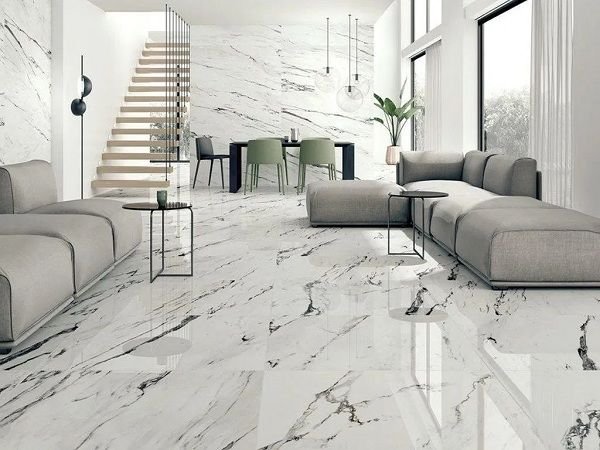We bring to you floor tiles in South Africa. Kindly stay back and enjoy our article.
Overview
Floor tiles are commonly made of ceramic or stone, although recent technological advances have resulted in rubber or glass tiles for floors as well. Ceramic tiles may be painted and glazed.
Types Of Floor Tiles In South Africa
Small mosaic tiles can be arranged in a variety of ways. Typically, floor tiles are put in a mortar that consists of sand, cement, and a latex component. Typically, the spaces between the tiles are filled with sanded or unsanded floor grout, but mortar was once utilized.
Natural stone tiles are attractive, but because they are a natural product, they are less uniform in color and design, and their use and installation necessitate more planning. The width and length of mass-produced stone tiles are uniform.
Granite or marble tiles are sawn on both sides and polished or finished on the top surface to achieve a consistent thickness. Other natural stone tiles, such as slate, are “riven” (split) on the top surface, causing the thickness of the tile to vary slightly from one location on the tile to the next and from one tile to the next.
Adjusting the amount of mortar under each area of the tile, utilizing wide grout lines that “ramp” between different thicknesses, or using a cold chisel to knock out high places can all help with variations in tile thickness.
Some stone tiles such as polished granite, marble, and travertine are very slippery when wet. Stone tiles with a riven (split) surface such as slate or with a sawn and then sandblasted or honed surface will be more slip-resistant. Ceramic tiles for use in wet areas can be made more slip-resistant either by using very small tiles so that the grout lines acts as grooves or by imprinting a contour pattern onto the face of the tile.
The hardness of natural stone tiles varies such that some of the softer stone (e.g. limestone) tiles are not suitable for very heavy-traffic floor areas. On the other hand, ceramic tiles typically have a glazed upper surface and when that becomes scratched or pitted the floor looks worn, whereas the same amount of wear on natural stone tiles will not show, or will be less noticeable.
Natural stone tiles: Spilt liquids can stain them; they must be sealed and resealed with a sealer on a regular basis, unlike ceramic tiles, which just need their grout lines sealed. Small amounts of dirt on many natural stone floor tiles, however, do not show due to the complex, nonrepeating patterns in natural stone.
Most vendors of stone tiles emphasize that there will be variation in color and pattern from one batch of tiles to another of the same description and variation within the same batch. Stone floor tiles tend to be heavier than ceramic tiles and somewhat more prone to breakage during shipment.
Rubber floor tiles have a wide range of applications in both home and business environments. They’re especially beneficial in instances where you want high-traction floors or protection for a floor that’s readily broken. Garage flooring, workshops, patios, swimming pool decks, sport courts, gyms, and dance floors are all frequent applications.
Plastic floor tiles: Interlocking floor tiles that do not require adhesive or glue to install are a recent innovation that are suitable for high-traffic areas, wet regions, and floors that are vulnerable to movement, wetness, or pollution from oil, grease, or other contaminants that may hinder adhesion to the substrate. Old manufacturing floors, garages, gyms and sports complexes, schools, and stores are all common applications.
Tendency Of Floor Tiles
The tendency of floor tiles to stain depends not only on a sealant being applied, and periodically reapplied, but also on their porosity or how porous the stone is. Slate is an example of a less porous stone while limestone is an example of a more porous stone. Different granites and marbles have different porosities with the less porous ones being more valued and more expensive.
Thank you for reading our article on floor tiles in South Africa. We hope to see you soon.


